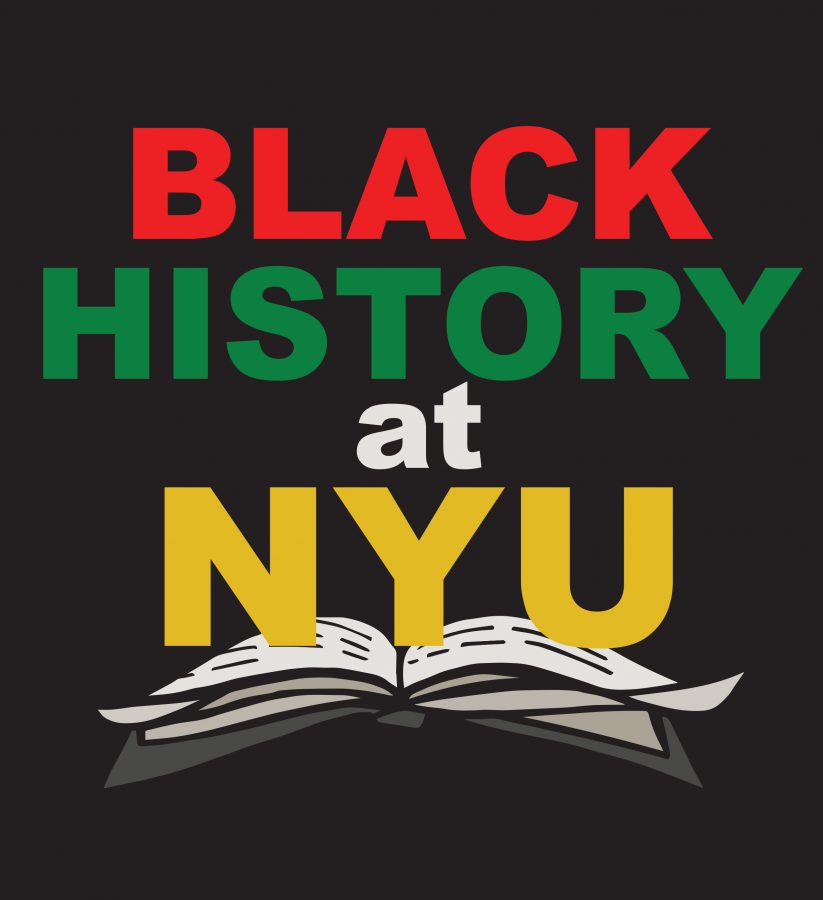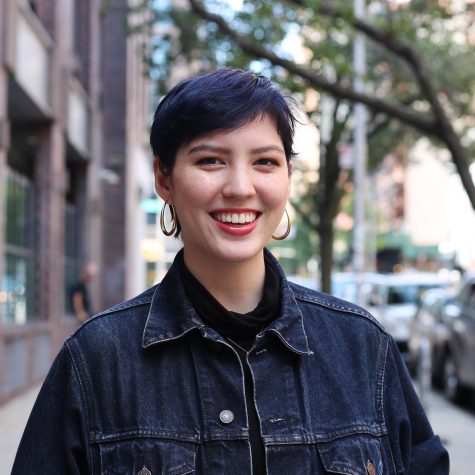171 Years of Black History at NYU
WSN’s Finley Muratova went through Bobst’s archives on the history of black clubs, students and faculty at NYU to highlight moments since the university started, admitted and employed them.
(Illustration by Sophia Di Iorio)
February 28, 2019
From the graduation of the first black student from NYU in 1848 to the first black professor hired in 1934, the history of black students and faculty at NYU is rich and filled with stories of discrimination and resistance.
African-American Students’ Experiences
According to Maneesha Patel, who worked on processing and arranging information for Bobst archives, regardless of permitted admission of black students at NYU, there was no university-wide policy to guarantee protection from discrimination to the African-American students. All of the schools and housing facilities had the right to determine their own rules and regulations regarding black students.
There are documented examples of African-American students expelled from NYU for being black. In 1926, nearly a century after Barnett’s graduation, Reba McClain was accepted to the Department of Physical Education. Soon after, she was expelled with the explanation that her presence in the classroom might offend Southern students. The same year, a black student, William Stanford Dougherty, was denied participation in a physical training course under the premise it would embarrass white students. A similar event took place earlier this month in a Silver School of Social Work class where a black master’s student was told by a classmate via email that they “found it easier to lead the discussion without black presence in the room.” Previously, Mclaurin was approved by the professor to FaceTime into class or complete a make up assignment upon his return. The student Mclaurin planned to FaceTime was absent from class that day.
There are documented issues in housing, too. One of them, described by Patel in her correspondence with a private researcher, concerns the experience of African-American student Thomas W. Young, who was denied housing when he arrived and they realized he was black. He had already paid the housing installment fees prior to his arrival. The reasoning behind the rejection was that NYU’s policy didn’t accommodate students of color to avoid offending students from the South.
The school maintained its racist policies long after Barnett’s graduation. Although all of the cases described by Patel got reported to the National Association for the Advancement of Colored People, NYU insisted on maintaining their discriminatory policies due to the “need” to ensure the comfort of white students and, especially, white students from the South.
In his letter to the NAACP, Elmer Ellsworth Brown, a white American educator, who studied at and later worked for NYU, wrote “circumstances of this character must inevitably arise […] whereby the lack of discrimination might more seriously embarrass the student concerned that it would [embarrass] his fellow students,” implying that discriminatory policies spare black students further embarrassment during their college career.
African-American Students’ Organization at NYU
In 1968, The African-American Student Center was founded as the first ever association of NYU’s black students. Since then, the organization has grown. Even though The African-American Student Center no longer exists in its original form, the Black Student Union took its place.
Other university clubs operate alongside BSU, such as Black Allied Law Students Association*, which celebrated its 50th anniversary on Feb. 2, 2018. Soon after being founded, BALSA outgrew NYU and later became a national student-run group, National Black Law Student Association, which currently operates and promotes the needs and goals of black law students nationwide. More recently, NYU students started an NABJ chapter on campus in fall 2018 in cooperation with the New York chapter.
Most schools within NYU have their own associations and clubs for African-American students. For instance, Wagner Graduate School of Public Service established The Black Student Association in 2007 and Stern School of Business founded The Association of Hispanic and Black Business Students over 30 years ago.
*The acronym BALSA is also used by NYU Langone Health and stands for Black & Latinx Students’ Association.
First African-American Student to Graduate From NYU
James Parker Barnett, born in 1831, became the first black student to graduate NYU in 1848. Barnett’s story has its complications due to expulsions from various colleges for being black, including Harvard University and University of New York’s medical schools. No university carries the exact name of University of New York, however, in referral to Barnett’s case, two institutions might be implied: NYU or City University of New York, which were both open at the time.
Barnett’s graduation from NYU is documented in Elmer Holmes Bobst Library archives.
He obtained his bachelor’s and, later, master’s degrees from NYU’s Department of Sociology, described as “the only man of color ever graduated from [the sociology] department.” He later went on to graduate medical school at Dartmouth College.
It is also known that the Violet Law School’s Class of 1905 included only one black man, five white women and no black women. Violet Law School no longer exists; it has since been replaced by NYU School of Law.
First African-American Professor At NYU
James Weldon Johnson, the first African-American professor at NYU, was hired in 1934 as a professor of Creative Literature and Education. Prior to his NYU career, he became a civil rights activist and is known for composing a song, often referred to as the “Black National Anthem.”
At the time Johnson started teaching at NYU, he was a published author and a renowned civil rights advocate. After receiving his bachelor’s degree in 1884 from Atlanta University, Johnson pursued a career in law and education. He became the principal of Stanton School, a segregated middle school in Jacksonville, Fla. he attended as a child. During his time as principal, Johnson expanded Stanton to incorporate both a middle and high school.
In 1901, Johnson and his brother John Rosamond Johnson moved to New York to pursue music and songwriting. Both found their niche on Broadway and composed over 200 songs for various shows. Johnson’s involvement in politics started in 1904, more or less by accident. His song, “Lift Ev’ry Voice and Sing,” originally written for Lincoln’s birthday at Stanton, became known by the general public as the “Black National Anthem” and, consequently, promoted by the NAACP.
Within Theodore Roosevelt’s administration, Johnson served as the U.S. consul in Venezuela and, later, in Nicaragua. During his time as a diplomat, Johnson anonymously published one of his most famous works of fiction, “The Autobiography of an Ex-Colored Man,” in 1912. In 1927, he reissued the novel under his own name.
Johnson became field sec for the NAACP in 1916 and organized a multitude of events, aiming to attract public attention to lynching and discrimination. As a part of the NAACP, Johnson organized the Silent Protest Parade, during which 10,000 African-Americans marched down Fifth Avenue on July 28, 1917, protesting frequent cases of lynching in the South.
Correction, March 3: A previous version of this article said that Shahem Mclaurin was not allowed to video chat into his Silver School of Social Work graduate class while he was absent. The sentence has now been updated to include that the respective professor had given Mclaurin permission to FaceTime in originally, but Mclaurin’s classmate who was supposed to call him that day was absent from class.
Email Finley Muratova at [email protected].


























































































































































Sydell Stapler • Dec 22, 2022 at 1:46 pm
I found my mom’s transcript from 1949. A degree was never awarded.